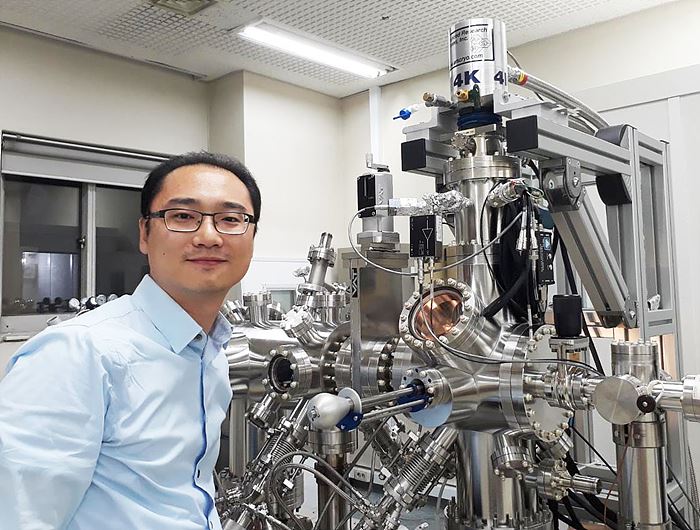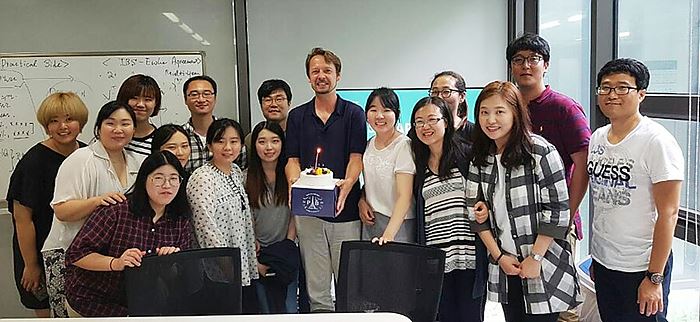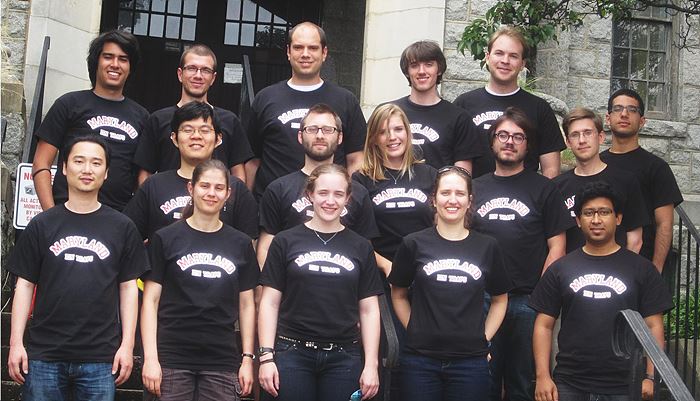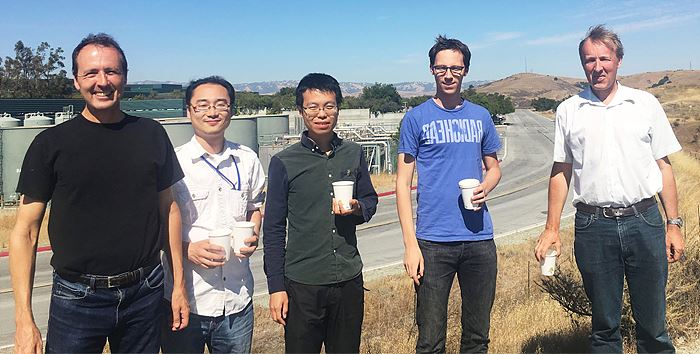주메뉴
- About IBS 연구원소개
-
Research Centers
연구단소개
- Research Outcomes
- Mathematics
- Physics
- Center for Theoretical Physics of the Universe(Particle Theory and Cosmology Group)
- Center for Theoretical Physics of the Universe(Cosmology, Gravity and Astroparticle Physics Group)
- Center for Exotic Nuclear Studies
- Center for Artificial Low Dimensional Electronic Systems
- Center for Underground Physics
- Center for Axion and Precision Physics Research
- Center for Theoretical Physics of Complex Systems
- Center for Quantum Nanoscience
- Center for Van der Waals Quantum Solids
- Chemistry
- Life Sciences
- Earth Science
- Interdisciplinary
- Institutes
- Korea Virus Research Institute
- News Center 뉴스 센터
- Career 인재초빙
- Living in Korea IBS School-UST
- IBS School 윤리경영


주메뉴
- About IBS
-
Research Centers
- Research Outcomes
- Mathematics
- Physics
- Center for Theoretical Physics of the Universe(Particle Theory and Cosmology Group)
- Center for Theoretical Physics of the Universe(Cosmology, Gravity and Astroparticle Physics Group)
- Center for Exotic Nuclear Studies
- Center for Artificial Low Dimensional Electronic Systems
- Center for Underground Physics
- Center for Axion and Precision Physics Research
- Center for Theoretical Physics of Complex Systems
- Center for Quantum Nanoscience
- Center for Van der Waals Quantum Solids
- Chemistry
- Life Sciences
- Earth Science
- Interdisciplinary
- Institutes
- Korea Virus Research Institute
- News Center
- Career
- Living in Korea
- IBS School
News Center
| Title | Infinite possibility presented by atoms, the basic unit of matter | ||||
|---|---|---|---|---|---|
| Name | Department of Communications | Registration Date | 2017-10-26 | Hits | 6287 |
| att. |
 thumb.jpg
thumb.jpg
|
||||
Infinite possibility presented by atoms, the basic unit of matterResearch Fellow Taeyoung Choi
Remarkable research results, where one bit of digital information can be stored in an individual atom, were published in international journals Nature and Nature Nanotechnology. Future application of this technology may possibly lead to the invention of a storage device with, for example, a USB memory chip capable of storing all movies that have ever made. Dr. Taeyoung Choi was the only Korean researcher who participated in the groundbreaking research as a co-author and the first author.
We heard from Research Fellow Taeyoung Choi (Assistant Professor of Department of Physics at Ewha Womans University) who returned to Korea to join the IBS Center for Quantum Nanoscience after working at IBM Almaden Research Center, which has been at the forefront of miniaturizing memory devices at atomic scale for the last few decades. 1. Please explain your role and research focus in the IBS Center for Quantum Nanoscience. 2. The groundbreaking ceremony of Center for Quantum Nanoscience will be held at the end of this year. What equipment are you planning to introduce and what research will you be able to conduct using such equipment? Inspired by a picture of the Universe to become a physicistDr. Choi revealed that he had a vague dream of becoming a physicist after seeing a picture of the Universe in an encyclopedia when he was a child. He liked science, especially physics, so much so that he always wanted to become a physicist after growing up, all the way from elementary school to high school. After he took a national college entrance exam in 1996, his parents and teacher encouraged him to go to a medical school, citing the difficulties of being a scientist. However, he decided to follow his dream and entered the Department of Physics in Seoul National University. Upon reaching his senior year, worries and uncertainties over what to do after graduation also followed him, just like most college students. He had observed that a few his close friends and classmates had transferred to medical schools. However, he was inspired by newly emerging theories that seek how to solve biological problems using theoretical physics, and continued his study in the field of his childhood dream. He decided to study abroad to expand his research in a new environment after serving the national mandatory military service. He got into the Physics Ph. D. program at the Ohio State University in 2004. He carried on his passion and studied biological physics theories using computer programming for six months in the research lab under Professor Ralf Bundschuh, a prominent figure in the field. “Studying biological system was much difficult than I thought. In particular, it was really challenging for me to learn new biological terminologies and complex interaction of the proteins, which made me change my major from biological physics theory to solid-state physics experiments,” he recalls. Choices made at two career crossroadsOhio State University has traditionally invested heavily in the field of solid-state physics experiments. Dr. Jay Gupta, who studied nanostructures using STM at IBM Almaden Research Center, joined the Ohio State university as an assistant professor when Dr. Choi was just started the Ph. D. program. He says that the first meeting with Prof. Jay Gupta was a critical moment for his research career to become what it is now. “I wanted to start from the beginning, so I contacted Professor Gupta, who was newly appointed. I started my Ph. D. program over in a completely empty lab. I basically lived in a student machine shop for almost a year and a half without knowing the research details. I handled machining tools such as lathes, milling machines, and drills, which were completely new to me. I learned how to make some of the tools and setup for experiments. I have vivid memories of washing my hands over and over to remove grease and grime at the end of every day.” All throughout his Ph. D. years, Dr. Choi has carried out research using STMs. He studied electronic and magnetic properties of single atoms and molecules on surfaces, and focused on developing nanometer-sized transistors and memory devices. In 2010, Professor Gupta introduced Dr. Choi to an opportunity to conduct joint research in an IBM lab, where Director Andreas Heinrich then worked as a research staff and STM group leader at IBM Almaden Research Center. That was how he and Director Heinrich know each other. As he got closer to completing his Ph.D. degree, he found himself standing at another career crossroad. One path was to get a job either in Korea or the U.S. and the other path was to continue his physics study as a postdoctoral researcher. “I wanted to continue my research. I had this desire of exploring a completely new research area. At that time, quantum computing, a very challenging research area, was gradually gaining attention. Quantum optics, in particular, sparked my interest,” he explains. Dr. Choi started his postdoc career in a research group led by Professor Chris Monroe at the University of Maryland, which was considered one of the best quantum computing research groups, controlling quantum states of ultracold atoms (trapped in a vacuum) by lasers. “My wife and I put everything we owned into a car, which wasn’t a lot, and drove six hours from Columbus, Ohio to move to University of Maryland in Washington, D.C. It was a completely new experience, both in terms of research and living environment. Fortunately, my wife also started her postdoc career at the same university under Professor Ichiro Takeuchi who specializes in synthesis and characterization of magnetic thin films and exploring their potential as memory devices. We were glad to continue our researches at the same school without having to live apart from each other. During the drive, we were filled with both excitement and worries imagining the new experiment and research environments we would soon venture into. Three things learned the hard way while studying abroad
Dr. Choi earned his Ph. D. in March 2011, six and a half years later he embarked on the journey. He recalls that life as a postdoc brought new challenges. “I did not have much experience or knowledge with the field (quantum computing). There were so many unfamiliar things as it was mainly optics experiments, not solid-state experiments. As a postdoc, I was required to guide and train graduates and undergraduates while carrying out my own research. I had to take on the responsibilities while learning deeper knowledge in physics to draw the desired experimental results.” He also says that at first he was not used to the research environment where researchers engaged in active discussions in meetings about research progress until satisfying answers were found. He worked on his research until late in the night almost every day during the postdoc years. Two years into his postdoc career, he and Prof. Chris Monroe successfully achieved a quantum entanglement state from five quantum information using laser in a programmable manner. His research was published in Physical Review Letters. He felt that all the efforts he had made were finally rewarded.. He confidently added that even if he went back in time and stood at the same crossroad again, he would have chosen the same path. Looking back at the three years he worked as a postdoc, he says he learned three valuable things from his experience. First, the hands-on experience of studying quantum physics, and conducting quantum computing and quantum entanglement experiments. Second, the lesson that excellent co-researchers are the ones that bring excellent outcomes and the know-how to productively work together with co-researchers by complementing each other’s strengths and weaknesses. Third, a broader perspective for physics based on the experience of getting involved in both solid-state experiments and optics experiments. From IBM to IBSAfter his first post-doc career, he was applying for corporate research positions and professor positions in Korea and the U.S. and got in touch with Director Heinrich who was working at IBM Almaden Research Center at the time. This led to Dr. Choi working at IBM for his second postdoc.
The IBM Almaden Research- group led at the time by Director Heinrich was focused on figuring out how to control the spin of single atoms on the surface into a quantum mechanical state. Dr. Choi was convinced that his previous postdoc research experience at the University of Maryland would be useful for this research topic. He was confident that he may be able to contribute this field by suggesting new approaches such as combining STM and quantum optics, which have not been demonstrated until now. Using cutting edge experiment facilities with brilliant co-workers at the IBM Almaden Research- group, he succeeded observing electron spin resonance of single atoms on surfaces. This finding, which was the first step towards quantum mechanical manipulation and control of matter, was published in Science. Six months later, he found that the individual atoms are coupled to each other through magnetic dipole-dipole interaction and realized atomic-scale quantum sensors for the first time. This achievement was published in Nature Nanotechnology. With these two remarkable research outcomes in his resume, he joined Ewha Womans University as an assistant professor as well as IBS Center for Quantum Nanoscience as a research fellow. Do not take anything for grantedDr. Choi started lecturing physics to undergraduate students at Ewha Womans University from beginning of this year. He says he feels both nervous and excitement whenever he stands in front of students. “I can easily sense when students are struggling with the lecture by looking at their faces.” Then he feels nervous and tries to find alternative ways to let students understand the physics. On the other hand, he feels happy and rewarded when students show a sign of understanding by nodding their heads. “I always try to cite an example that can be easily understood by students and to introduce practical applications of physics in real life.” He is highly motivated and energetic to teach physics to the students in that he also encourages students to ask questions every ten minutes during his lecture. When asked if he had any advice for young people would like to become basic science researchers, he gave an honest answer by saying that one requires a long period of training and studying in order to become a scientist and must get used to a lot more failures than successes. He also advises that young scientists should enjoy extreme thrill and pride when they measure something new for the first time, which nobody else in the world has found yet. Dr. Choi, who promises unlimited support to his children if they wish to become basic science researchers, leaves the following messages to young scientists: “Do not take anything for granted. Keep asking questions until you figure it out. Work together with others to solve problems. Train yourself to think logically step-by-step.” |
|||||
| Next | |
|---|---|
| before |
- Content Manager
- Public Relations Team : Suh, William Insang 042-878-8137
- Last Update 2023-11-28 14:20















